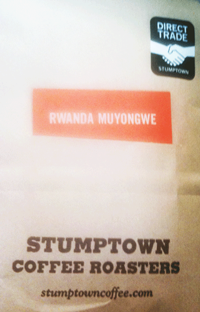What’s it like to live in a Millennium Village?
In Mayange, a cluster of villages about an hour’s drive south of Kigali, Rwanda, interventions by the Millennium Village Project across all sectors (in seeds, fertilizer, malaria nets, health clinics, vaccines, ambulances, water sources, classrooms, computers, cell towers, microloans and lots more) aim to lift villagers out of poverty within five to ten years. What do we know about the effects of such ambitious projects on the lives of the people living in these impoverished, rural communities? A qualitative study by Elisabeth King, a post-doctoral fellow with Columbia’s Earth Institute, produces a fascinating if limited* “snapshot” of social impacts of the Millennium Village Project in Mayange. A few observations:
The villagers King talked to were reluctant to bare all to a foreigner asking questions about delicate social topics. Her questions about quality of life, trust, and social exclusion elicited some contradictory and evasive answers: “Life in Mayange…In general it is not bad, it is not good, it’s in between.” “I know people well. But then, people are private and one only knows one’s own problems.” “There are no problems. But there are always some small problems between people though.” King explained that in her previous research she found that Rwandans “downplayed negative aspects of social life and tended to embed negative reflections within positive pro-government ‘bookends.’”
MVP has good brand recognition and outreach; cooperatives sometimes increase cooperation. King found that the project was well-known among villagers, and almost all could name a change that had resulted from the project. Most were members of some kind of cooperative (farming, basket-weaving, bee-keeping) created by the project, and some described these groups as strengthening social bonds in the community or increasing women’s confidence by helping them provide income for their families.
Villagers thought that benefits from the project were unevenly distributed. In response to “Who gained the most from the project?” villagers answered most frequently “MV staff,” followed by “local leaders,” and villagers most willing to adopt new practices suggested by the project.
MVP may not be doing so well on the most basic thing – letting people say what THEY want. The most common suggestion was that the project should consult more with people in the community about what they want. One woman told King: “The MV has to meet with local community to learn more about what people really want because sometimes the MV brings things that the community doesn’t need or want. People may have good ideas.”
--
*King’s study is limited in several ways beyond lack of statistical significance (she spoke with 35 individuals and 8 focus groups in a population of 25,000 people). One, as a visiting Westerner asking questions about MVP, she can’t avoid being seen as tied with the project. Whether this makes her interviewees more timid in voicing complaints (for fear of losing some project benefit or subsidy), or more bold (in the hopes of gaining resources to address their troubles) is hard to say. Two, the Rwandan ban on talking about ethnic divisions prevents people from speaking candidly about this obvious issue in a place where resettled genocide survivors and released prisoners now live side by side. Three, King has no baseline data, so she can’t talk about changes in quality of life or social cohesion based on statements from before the project vs. during/after the project (see also: Clemens and Demombynes).
--
Thanks to Michael Clemens for the tweet that sent this study our way.
Read previous posts on the Millennium Villages here.
 From Aid to Equality
From Aid to Equality





